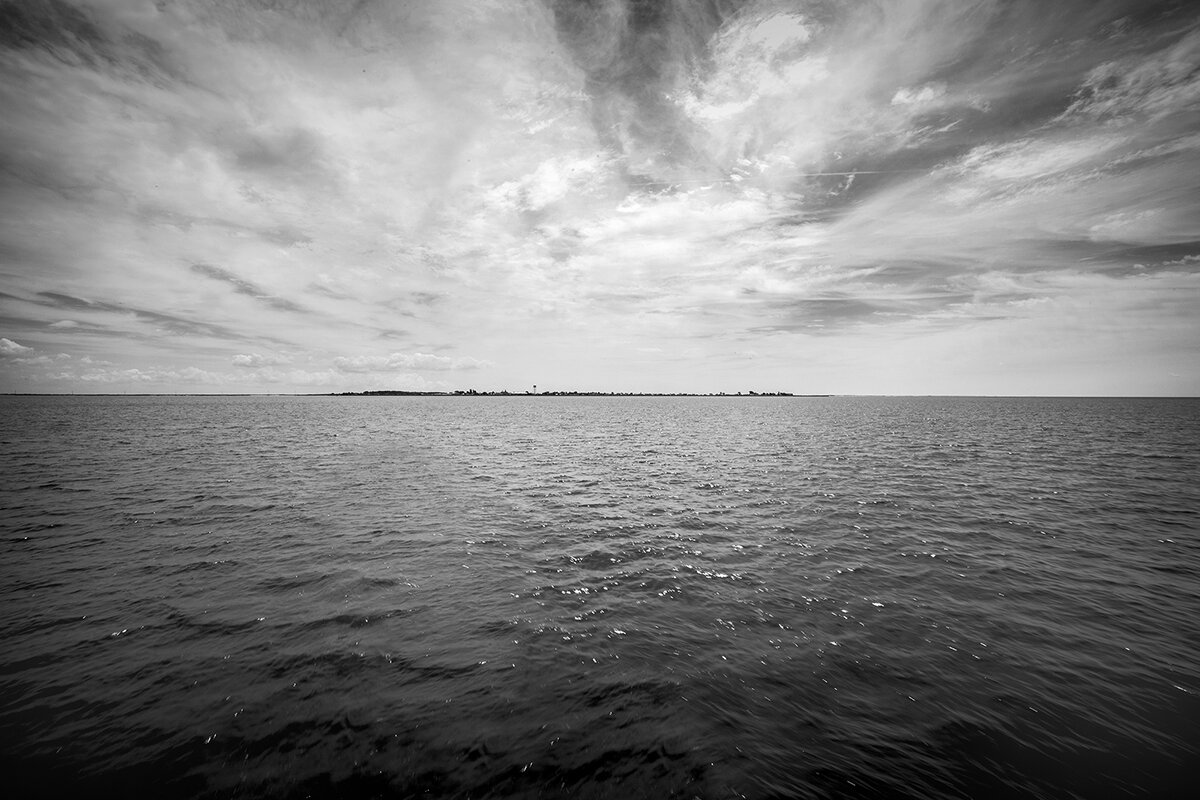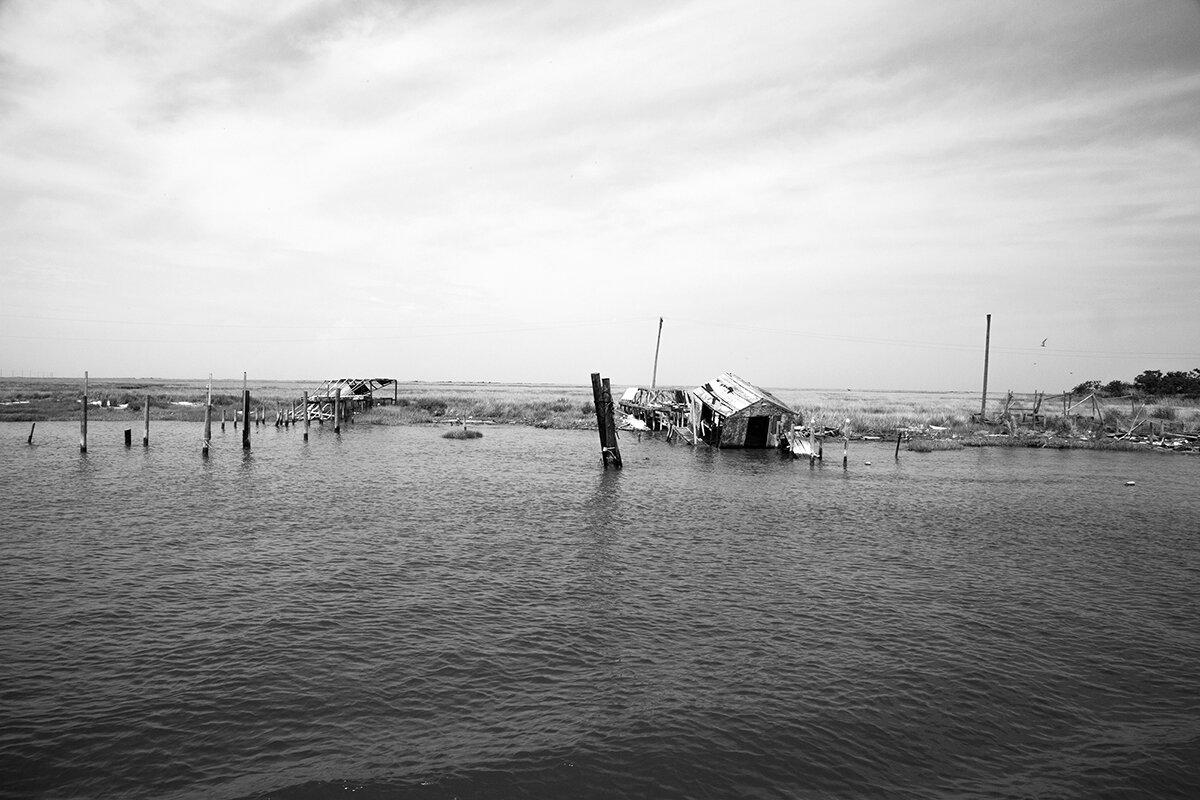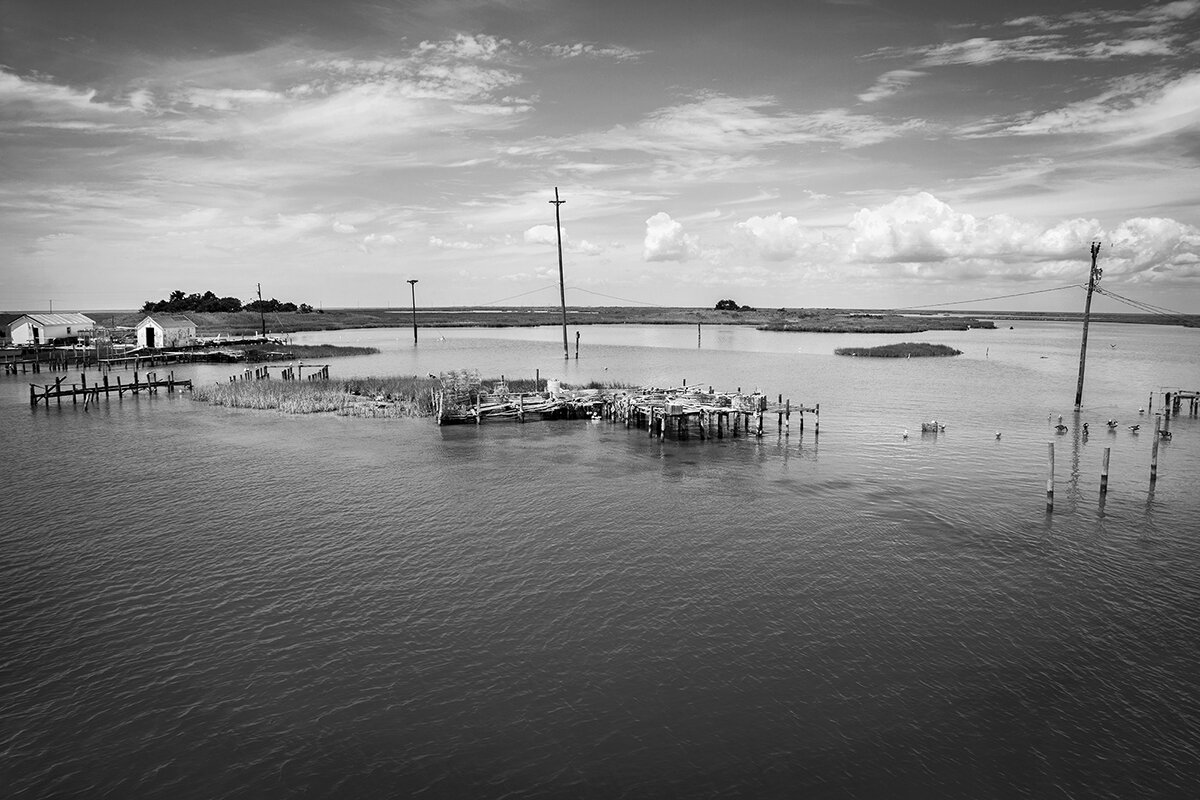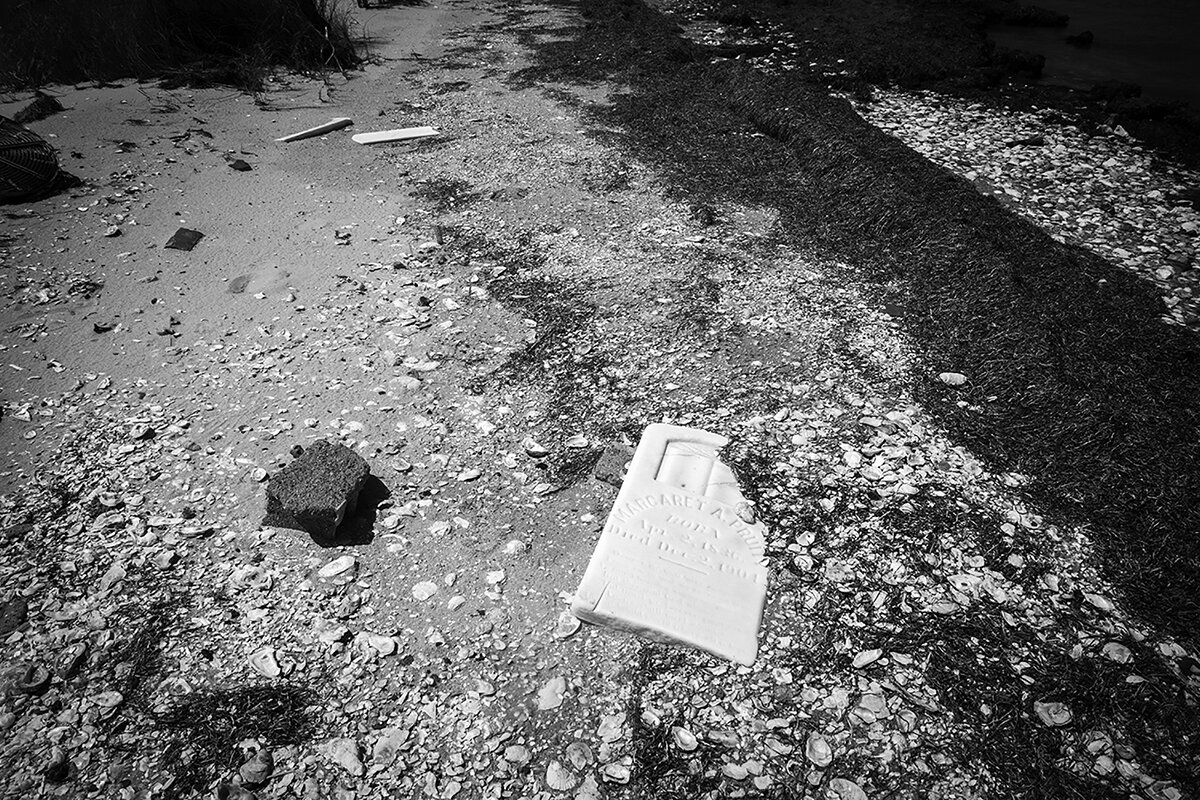H. Jennings Sheffield | Going Away from Here
Growing up on the east coast, much of my life was spent on the Chesapeake Bay, and every once in a while, out on the water you would run into a crabber from Tangier. They spoke a peculiar dialect—one that is hard to explain. It is a distinct language, and one spoken nowhere else. You could always tell a crabber from Tangier even before they spoke—their boats were worn from the years of pounding from the Chesapeake, and their pots were many. This has been their way of life for hundreds of years, however, all that is changing for them. With the arrival of the internet in 2010, and as more and more outsiders from the mainland visit the island, the distinction of their language is vanishing.
And, that is not all that is disappearing.
The island itself is doing so—washing away into the water. Although scientists document that the rising sea levels in this area of the Chesapeake are among the highest documented, the residents of Tangier claim it is erosion that is the culprit for their disappearing island and not climate change. The land erodes an average of 20 feet per year causing about two-thirds of Tangier’s landmass to have disappeared since 1850. What was once a valley of deadrises and shedding houses, now faces complete extinction.
The very water that the residents of Tangier depend upon to survive, is swallowing them up an average of nine acres every year. Tangier is home to 450 full-time residents (about half the number it was in 1940) and what was once known as “the soft-shell crab capital of the world.” If you have ever enjoyed a soft- shell crab anywhere on the east coast—chances are they came from Tangier. Today, the island sits only 3 feet above sea level, and 1 ¼ miles wide by 3 miles long. Upon arrival by boat, it is hard to see the island off in the distance because of how low it sits to the water. Having few trees left, the only marker from the bay is the water tower of Tangier that has a crab on one side and a cross on the other. This deeply religious island has already been split by the Bay’s waters, which now seeps up through the ground below.
I have spent the last three years (2017–2019) photographing Tangier Island. Upon learning Tangier was projected to be uninhabitable in 50 years if they did not receive government funding to build a jetty system, I knew I had to document it. When the residents are forced to evacuate, they will spread out over Virginia, Maryland and North Carolina. We will lose an entire culture of people as unique as their dialect, and although they will still exist--the land they have called home for hundreds of years will not. This once untouched and proud crabbing community is predicted to be one of America’s first “climate change refugees.”
Tangier is not alone and sadly tells the tale many different low-lying cities in the US and around the world are facing in the next 80 years. According to the National Oceanic and Atmospheric Administration (NOAA) Miami, Florida; Atlantic City, New Jersey; New Orleans, Louisiana; Galveston, Texas; Charleston, South Carolina; and Virginia Beach, Virginia will all be under water by 2100. By photographing Tangier Island, I hope to inform viewers of the need to take notice now, and to think about the difficult decisions that stand before us—how will we decide who and what is worth saving? How will we choose who receives the funds necessary to survive, and who are we willing to let wash away into the water?
Video of Artist Talk
Thursday, November 19th, 11AM EST














Artist Info
H. Jennings Sheffield is a contemporary artist working in lens-based media, video, and sound. Sheffield received her BFA in photography and digital media from the Atlanta College of Art and her MFA from the University of Texas at San Antonio in photography and new media. Her core research is highly concept-driven inspired by memory, moment and time and often utilizes familial imagery to convey both the intimacy and the diverse roles and relationships individuals play within a family unit. The methodologies utilized to create her work can take up to two years to complete. As a result, Sheffield periodically takes on landscape-driven projects that begin with just her responding to the landscape. She is interested in landscapes that tend to be fleeting. Similar to her core research, Sheffield approaches the landscapes looking for and observing changes over time.
Sheffield is currently an Associate Professor of Art at Baylor University. Her photographs and work are in several collections throughout the United States and have been exhibited internationally with her latest work exhibiting at The Print Center in Philadelphia; Houston Fine Art Fair; Colorado Photographic Arts Center; Lens Culture; Living Arts of Tulsa; Cambridge University (UK), and Medien Kultur Haus Wels, Austria.
In addition to her research, Sheffield provides workshops and lectures all around the United States on topics including her artistic practices and methodologies, digital techniques in photography, and considering the image in a new context, outside of the traditional roles.
